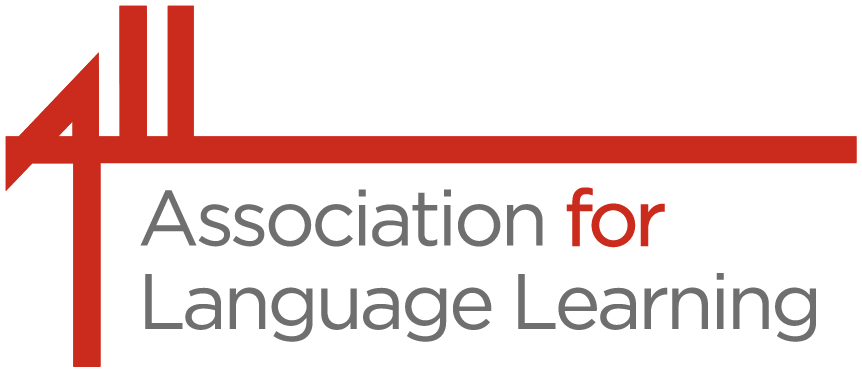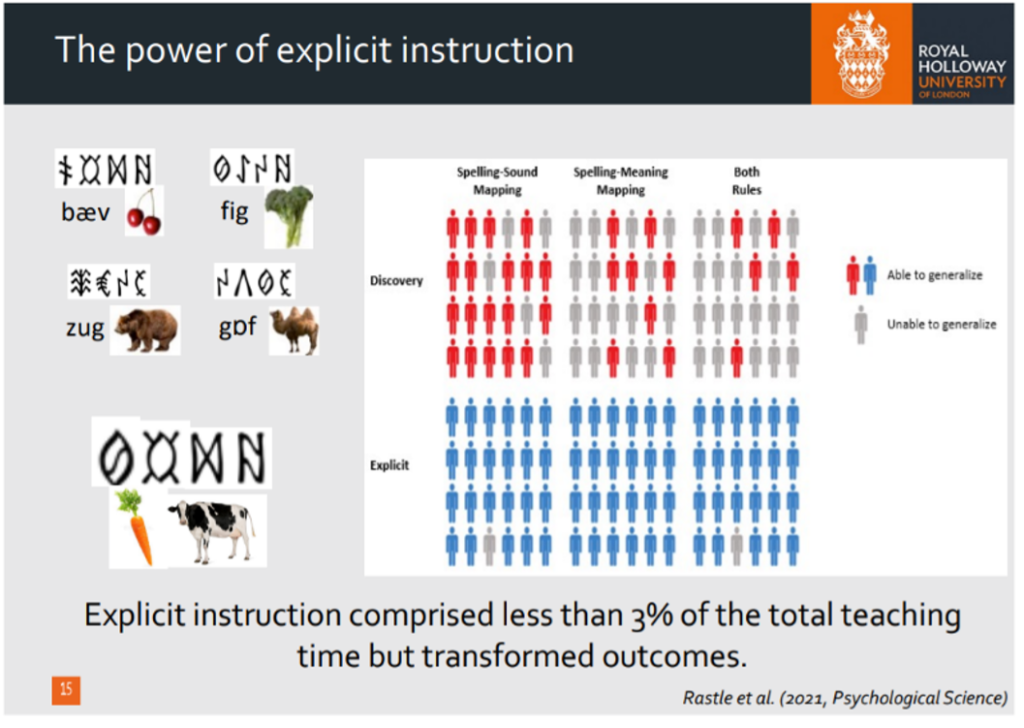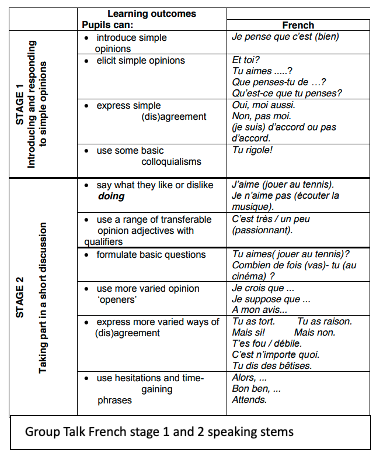New GCSE, new curriculum design?
Wendy Adeniji was previously a secondary school principal, and is now an MFL consultant and trainer and co-author of the book Tried and tested: the ultimate guide to teaching primary languages (2022).
Helen Myers’ scrupulously detailed article in Languages Today 45 looked at the main changes in the new GCSE for French, German and Spanish, and how the Boards differ, while here I will consider how we might review our curriculum (what is in our teaching plans etc.) to ensure that we are making the most of the opportunities provided.
Part of the rationale behind the new GCSE was to make the exam accessible to more students, and hence increase uptake, as there was a view that the current GCSE was more suited to students who can manage a higher cognitive load. If we are to ensure that low- and mid- prior attainers can be successful in a language at GCSE, we need to be aware of any barriers to their learning. These could include: cognitive load, ability to process, a low reading age in English, sometimes poor concentration, and often organisation. What works well for these learners is having a strong relationship with their teacher, someone who is interested in them as a person, and also having a curriculum designed to break down learning into smaller chunks, and give ample opportunity to practise through reviewing and revisiting – in particular the really high frequency words and phrases in different contexts. Learning by rote is generally de-motivating for such students who benefit from having interesting contexts in which to learn language.
We know that schools are measured according to the number of students who take the English Baccalaureate (EBacc) and the limiting factor is most often the level of successful Language entries; From September 2024, we learn, he number of languages entries will become a headline measure, and be displayed on the school website.
In trying to expand recruitment to GCSE courses, it is likely then, in many schools, that the uptake of mid- and low prior attainers will be the major focus. As such, the KS3 curriculum offer must be designed in a way that makes it accessible, stimulating and enjoyable for these students; this may imply some personalised planning rather a ‘one size fits all’ curriculum, and it is helpful to remember that in Key Stages 2 and 3, the learning expectations for all are described in the National Curriculum (NC) Programme of Study (PoS) which has no prescribed vocabulary or topic content, so that schools have a great deal of leeway in designing courses that are relevant to their cohort. (Schools not bound by the NC should have a curriculum of similar or greater stretch.)
If we think about our learners, we know that some struggle with the sheer volume of vocabulary and grammar to learn, digest, and then use. The Ofsted Research Review (2021) highlighted the importance of logic underlying the progression in curriculum plans, from simpler to more complex concepts and structures. So, departments should agree a logical sequence for introducing grammatical concepts relevant to their languages.
On visits, or when viewing knowledge organisers on school websites, I see full verb paradigms taught from Year 7, when students are only actually encountering or using two or three persons of the verb. This may lead to cognitive overload for all but the very top learners.
My thoughts are:
- Common, really useful or transferable, language can be covered in the early stages and frequently revisited so that it is securely remembered.
- Departmental procedures for monitoring the acquisition and long-term retention of vocabulary over time should be clear and consistent across the whole department.
- There may need to be variety in the curriculum content for lower attaining students.
- An appropriate selection of fewer key structures and vocabulary, with greater opportunities to use these repeatedly and creatively in different contexts, may be a better recipe for success, including at foundation GCSE, for those who struggle. Too much detail can lead to disaffection.
The 2026 GCSE contains distinctly different items of vocabulary. Of course, it’s a good idea to analyse which words will be contained in the new exams to inform planning, but I don’t suggest discarding words not contained in the specification, as some might well relate to topics of interest to the young people in our classes. I suggest that topics are still a good way to teach new vocabulary, as the contexts help language to ‘stick’, but departments will need to decide which ‘high value’ language in different categories to focus on. These can then be revisited the following year and added to, year on year. Paul Nation suggests that between 5 and 16 encounters are necessary for a word to stick in the long-term memory.
High value language from the start might include
Questions: What? What (is someone) like?
Modal verbs: May I.. ? I’ve got to .., , I want to …, I’m going to ..
Time markers: Then, Next, After that …, Suddenly
Connectives: And, But, Maybe
Language of Negatives, Comparisons, Opinions, Description, Emotions, Narration …
Memory is a critical issue. I would encourage all languages departments to take part in the national Spelling Bee and Translation Bee competitions, which I have used in a wide range of schools with different students, including very disadvantaged cohorts. (References below, including to the AI-driven resources that help students practise). These help clarify for learners memorisation strategies with a light touch. Practice through testing is one of the best evidence-informed ways to help make new learning stick (as explained brilliantly by Professor John Dunlosky) and taking part in these competitions has been universally successful in all the schools where I have used them.
As we know, phonics knowledge is going to be assessed in the new GCSE, through the ‘read aloud’ task in the speaking exam, and the dictation element of the listening exam. However, the exam is not the only reason we should be teaching phonics! Research shows that direct instruction of the important sounds of a language (especially those that are different from the native tongue) accelerates learners’ ability to make the sound-spelling link. Kathy Rastle’s research shows the difference between explicit instruction and discovery. Two groups of learners were taught an artificial writing system over 10 days. One group learned solely through discovery of the novel words, whereas the other group received a brief session of explicit instruction on regularities before training commenced. Results showed that virtually all participants who received instruction performed better on tests that probed generalisation of underlying regularities. In contrast, less than 25% of discovery learners performed at the same level.
The key phonemes need to be taught early in learning a language, which may be in Primary or at the start of Secondary, with a focus on the highest frequency phonemes first, so that students develop good habits.
Planned review over time is essential, and some departments like to ask students to complete a ‘phonics driving test’ – a good way of reinforcing the idea that knowing the ‘sound-spelling’ rules is essential to being successful in several language skills (perhaps especially speaking).
Over time, speaking skills need to be revisited and extended in age-appropriate ways. ‘Group Talk’ was pioneered by Greg Horton at the Wildern School to motivate pupils to speak in the target language, a holy grail of MFL teachers. This is the single most effective technique I have used in my (so far) 29 years of Language teaching. When I used it consistently over 5 years with both high and low prior-attaining classes, my GCSE speaking exam results significantly improved.
Students use a series of sentence stems which get progressively more complex and involve asking and answering questions about topics that are of real interest to them. Picture cards (anything from food, social media influencers, TV programmes, teams, musicians…) are used as the speaking stimuli. A detailed explanation can be found in a chapter in the recent ALL e-book It’s good to talk! and in a webinar I co-presented about Group Talk with Greg.
Assessment does not need to change hugely for the new GCSE, but weight should be placed on the key vocabulary and grammatical items that students need to know. I would suggest that students’ knowledge of phonics should be assessed early on in their Secondary language learning journey and that teachers develop enjoyable age-appropriate ‘read aloud’ and dictation activities as part of the experience.
With my technology hat on I return to Speaking as it makes such a great contribution to students’ feelings of self-efficacy and success, and it’s vital that teachers encourage more speaking in the classroom. Assessment is tricky, so it’s worth looking at online platforms such as Sanako Connect, which allow students’ group / pair conversations. as well as individual utterances, to be recorded simultaneously, and allows the teacher to listen in synchronously. At home, students can use AI tools to get instant feedback on the quality of their pronunciation, using the latest technology to really enhance language learning.
References and links
Images by kind permission of Prof. Kathy Rastie and WA
Ofsted Research Review 2021 https://www.gov.uk/government/publications/curriculum-research-review-series-languages
Nation, I.S.P. (2001) Learning Vocabulary in Another Language, Cambridge University Press
Spelling and Translation Bee competitions https://www.flsb.co.uk/
AI-driven Spelling and Translation Bee practice activities from Sanako https://www.sanako.co.uk/Spelling-Bee-Competition/
Professor John Dunlosky, Improving Student Success: Some Principles from Cognitive Science, 2013 McMaster University https://www.youtube.com/watch?v=7KsC9CktCno
Rastle, K., Lally, C., Davis, M. H., & Taylor, J. S. H. (2021). The Dramatic Impact of Explicit Instruction on Learning to Read in a New Writing System. Psychological Science, 32(4), 471-484. https://journals.sagepub.com/doi/full/10.1177/0956797620968790
Webinars explaining Group Talk with Greg Horton and French, German and Spanish phonics instruction in more detail https://speakeasi.net/past-webinars/
It’s good to talk! Association for Language Learning e book, edited by and chiefly written by Steven Fawkes https://www.all-languages.org.uk/product/its-good-to-talk-ebook/
Sanako Connect https://sanako.com/connect


